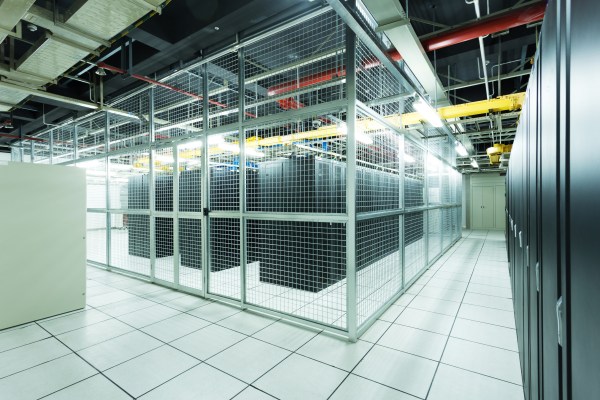Businesses that use bare metal servers take on a lot more responsibility than businesses that use the cloud. Even so, it’s important to use the right vendor. With that in mind, here is a straightforward guide to the five key factors to consider when choosing a bare metal provider.
Hardware options
The choice of processors, memory, and storage directly impacts the server’s performance and suitability for your workloads. Modern applications often require high-performance CPUs, so it’s important to evaluate the range of processors offered, including whether the provider supports the latest Intel Xeon, AMD EPYC, or ARM-based processors.
Additionally, consider the memory configurations available, as different workloads—such as databases, virtualization, or high-performance computing—demand varying amounts of RAM.
Storage options should also be carefully evaluated. Providers should offer a range of storage types, including traditional HDDs for large, cost-effective storage and SSDs or NVMe drives for high-speed, low-latency data access.
The ability to customize storage setups, including RAID configurations, is also important for ensuring data redundancy and performance. Some providers offer GPU options for workloads that require intense parallel processing, such as AI training and video rendering.
Network performance
Network performance is another key factor when choosing a bare metal provider, as it directly affects the speed and reliability of your server’s communication with users and other systems.
A critical component to consider is the available bandwidth, which determines the maximum data transfer rate your server can handle. High bandwidth is essential for applications requiring rapid data transfer, such as content delivery networks (CDNs) or data-intensive analytics platforms.
Additionally, consider the latency of the network, especially if your application needs real-time processing or is latency-sensitive. Providers with a global presence and multiple data center locations can help reduce latency by hosting your servers closer to your end-users.
The provider’s network infrastructure should also be assessed for redundancy and reliability. Look for providers that offer multi-homed networks, which use multiple upstream providers to ensure continuous connectivity even if one path fails.
Pricing and cost structure
Pricing is a fundamental consideration when selecting a bare metal provider, as it directly impacts your operational expenses. The transparency of the pricing model is critical; you should fully understand what you’re paying for.
Providers often offer various pricing structures, such as hourly, monthly, or annual plans. Depending on your usage patterns, one may be more cost-effective than the other. For instance, hourly billing is beneficial for short-term, burstable workloads, while long-term projects may benefit from the cost savings associated with monthly or annual commitments.
It’s also important to consider potential hidden fees that can inflate the overall cost. Some providers may charge extra for additional IP addresses, data transfer beyond the allocated quota, or even basic features like server monitoring. To avoid unexpected costs, ensure that you have a clear understanding of what’s included in the base price and what incurs additional charges.
Providers offering flat-rate pricing with no hidden fees are often the best choice for maintaining budget predictability. Additionally, consider the cost efficiency in terms of the performance-to-price ratio. A lower cost may not always equate to better value if the server’s performance fails to meet your requirements.
Support and service level agreements (SLAs)
The quality of technical support can significantly influence your ability to resolve issues quickly and maintain smooth operations. Look for providers that offer 24/7 support with multiple contact options, such as phone, email, and live chat. The responsiveness and expertise of the support team are just as important; a knowledgeable support team can reduce downtime and assist with complex configurations or troubleshooting.
Key SLA metrics to review include uptime guarantees, response times, and resolution times. High uptime guarantees (typically 99.99% or higher) are crucial for mission-critical applications, ensuring that your servers remain operational with minimal downtime.
Additionally, it’s beneficial to understand the provider’s policies on handling outages or failures—some may offer credits or compensation if SLA metrics are not met. The choice between managed and unmanaged services also comes into play here. Managed services typically offer more comprehensive support, including server maintenance and monitoring. This can be highly valuable if you lack in-house technical expertise.
Scalability and flexibility
The ability to scale up or down quickly without significant disruptions can be a competitive advantage. When evaluating a bare metal provider, assess how easily you can modify your server’s resources, such as CPU, memory, or storage. Some providers offer auto-scaling options, allowing your infrastructure to adapt dynamically to changing demands, which is particularly useful for handling traffic spikes or seasonal workloads.
Flexibility in integrating with hybrid or multi-cloud environments is also important, especially for businesses that use a combination of on-premises, private, and public cloud resources. Providers that offer seamless integration with other cloud platforms, such as AWS, Google Cloud, or Microsoft Azure, can provide a more versatile infrastructure that supports diverse workloads.
Additionally, consider the provider’s roadmap for future upgrades and new technologies. A provider that invests in the latest hardware and network advancements ensures that your infrastructure remains competitive and can support your business’s long-term growth.







